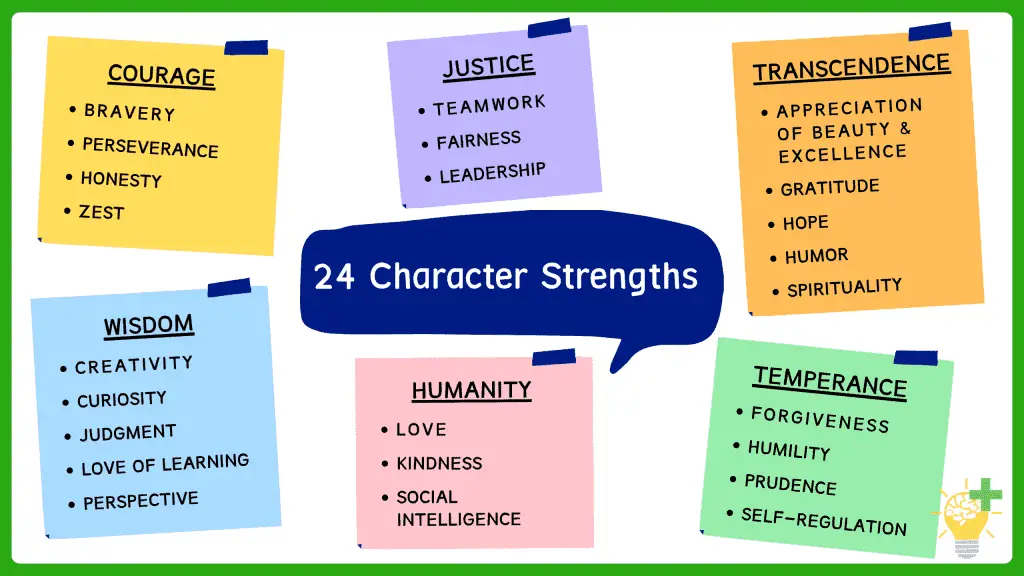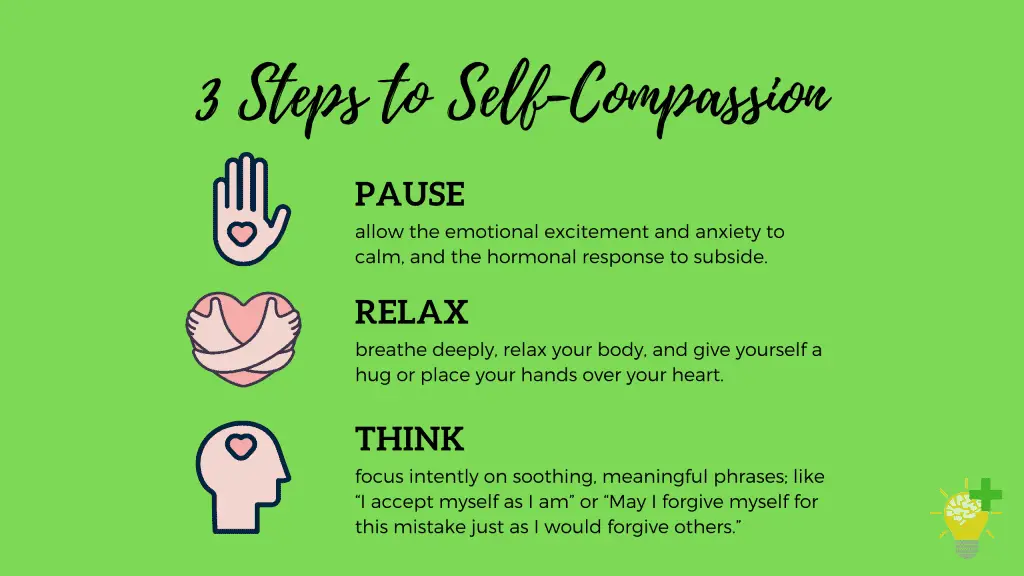In my life, I have observed that many of the happiest people I have met exude positivity. I have experienced more contentment when I am positive in my own life.
This leads to the question, is positive thinking a skill?
In life, we have several experiences that are either negative or positive. Challenging situations tend to leave us with negative emotions. I have learned that I can have these emotions and that they’re okay, but I can also have a positive outlook in the moment and for the future.
I have seen this to be the case in others and have concluded.
Positive thinking is a skill that can be learned and developed, not a personality trait you are born with. Studies indicate that a person can develop this skill by utilizing positive thinking techniques, which will be covered in this article.
Positive thinking is not just about your mental health. It will also impact your physical and emotional health, influencing your relationships, social skills, and outlook on life.
What is Positive Thinking?
Positive thinking is an attitude towards life that focuses on the good rather than the bad. It is also seeing the good in the bad. This doesn’t mean looking at the world through rose-colored glasses and neglecting that bad things happen.
Positive thinking is actually about having a positive attitude when facing life problems. When awful things happen, and they will, you don’t have to avoid or ignore them to be positive.
Positive thinking is about making the best of bad situations, looking for the best in people, and looking positively at yourself and your abilities.
“Positive thinking will let you do everything better than negative thinking will.”
– Zig Ziglar

Related Article: Are You A Positive Thinker?
Positive Thinking Exercises
As you know, skills are the ability to do something well. The process of acquiring a skill is by practicing regularly or, in other words creating a habit.
As a safety mechanism, our brains pay more attention to negative experiences.
Because survival is our number one priority, we generally value negative information more than positive information.
As a result, we are often ignorant of what drives our daily happiness. Positive psychology is based on the idea that people can have happier, more meaningful lives by focusing on the positive rather than the negative.
The following positive thinking exercises are designed to develop the habits necessary to possess positivity.
- Exercise 1: Self Assessment Strengths Test
- Exercise 2: Character Strength Action Plan
- Exercise 3: My Strengths Life Story
- Exercise 4: Reminiscence About the Past
- Exercise 5: Positive Affirmations in the Morning
- Exercise 6: The Guest House Rumi Poem
- Exercise 7: Goal Vision Board Notebook
- Exercise 8: Collect Positive Quotes or Positive Images
- Exercise 9: Gratitude Journal Daily
- Exercise 10: Answer for What Motivates You
- Exercise 11: Passengers on the Bus Worksheet
- Exercise 12: Self-Compassion Pause
- Exercise 13: Belief in Yourself
- Exercise 14: Eliminate Negative Thoughts and Think Positively
- Exercise 15: Create Positivity Triggers For Spontaneous Positive Thoughts
- Exercise 16: Cognitive Reappraisal Exercise
- Exercise 17: Rainbow with Skittles
- Exercise 18: Give Yourself Grace
- Exercise 19: Change Your Physical State
- Exercise 20: Positive Play
- Exercise 21: Turn Off Social Media – Detox
- Exercise 22: Surround Yourself With Positive People
- Exercise 23: Encourage and Praise
Exercise 1: Self Assessment Strengths Test
The first exercise is designed to establish a foundation. To improve positivity, you must first understand where you are starting.
Taking a personal inventory is very important when you’re thinking about positivity. We all know that we can always do better no matter how positive we are. A personal inventory can help you figure out what is helping you and what is hindering you.
In the beginning, you might think about all the things you want to improve. Don’t! Most of us are very quick to list our flaws but very slow to list our strengths. Some people might think it’s bragging. It’s better to think about what you like or are proud of than what you don’t like.
We have to be our own biggest cheerleaders. In other words, anything we do to have healthy self-esteem will also help us have a strong sense of self-confidence and be more motivated. For this reason, a self-assessment can also be called a strengths assessment.
Here’s a great FREE strengths test that will help get you started.
Exercise 2: Character Strength Action Plan
If you took the test from the first exercise, you would have your top five strengths according to that test.
Alternatively, you can take the VIA Institute Character Strengths Test before working on your action plan. I find the VIA Institute Test very concise and informative and it only takes about 10 minutes to complete.
You can choose one of the character strengths from the image below as a final option.

One of the best ways to grow and improve your character strengths is to identify one strength, set a specific and measurable goal for that strength, and develop a concrete plan for getting there.
For example, you might choose perseverance as the character strength and plan to do things that push you to learn new things and become 1% better each day. In the same way, you could focus on the love of learning could try to learn a new language and practice for 10 minutes a day.
Take the VIA character strength survey
Pick one of your top five strengths and write down your answers to the following questions:
- How am I already using this character strength?
- I use this character strength in what areas of my life?
- Where could I use this strength more?
- What else could I use this character strength?
- What is my plan for increasing my character strength? What exactly would I want to do? How often?
- When will this begin and how long will my plan last?
- If I achieve my goal, what will how will my life look? How will I feel?
Exercise 3: My Strengths Life Story
You will write your life story in three parts: the past, the present, and the future. This exercise aims to emphasize your strengths in each of the three parts.
Prompts for Writing
Write about your past. Make sure to talk about the things you’ve had to deal with and the things that made you strong enough to get through them.
Write about your life right now. How have you changed since you were younger? What are you good at now? How have your skills changed? What are you having problems with, and how can I help you? How can you use your strengths to get through them better as you face these challenges?
Make a list of things you want to do in the future. How will your life be different from now? How can you use your strengths to make this dream come true? Strengths will grow. What do you want to become? How will you be different from now? What do you want to achieve? Finally, how can you do this?
Exercise 4: Reminiscence About the Past
In the last exercise, you would write about strengths that you employed from your past, today, and future.
The truth is that we all have a peppered past, some more tragic than others. If that is the case for you, I’m sorry. But this exercise is to focus on a positive experience you had – only one.
For this exercise, you will think of a single event that produces positive emotions. You want to go deep into the visualization, thinking of as many details as possible. Think of all the good feelings of that experience.
By doing this, you will recognize how positivity feels and respond to it more consistently.
You can repeat this exercise with other positive experiences to develop a habit of seeing the positive things in your life. No matter how small they might be.
Exercise 5: Positive Affirmations in the Morning
You can straightforwardly get into a positive mindset when you use affirmation exercises.
In the morning, before I get out of bed, I say a few simple words of affirmation. It just helps me start the day in the right frame of mind.
The best way for me to deal with bad things is to say positive things to myself. When I do this, I can quickly shake off the bad things that happen to me.
It means that the negative thoughts don’t stay with me for a long time.
Affirmations don’t eliminate difficult situations, but it helps me be less stressed when things get messy.
I’m sure things will work out.
If I didn’t take that extra moment to say my affirmations, I tend to be more negative and judgmental (I have to work on that every day).
I’m pretty confident that you will find it easier to stay positive more often if you say some positive affirmations daily.
There are apps to help you with positive affirmations. But here are seven examples of positive affirmations:
- I love myself as I am.
- Today, I feel strong in my heart and clear in my mind.
- It’s okay not to be okay. Whatever I need to feel, I let myself feel.
- Happiness is a choice.
- I am proud of myself for my efforts.
- Mistakes are part of my life and they help me grow.
- I am allowed to say no to others and yes to myself.
Related Article: 7 Best Apps To Improve Self-Esteem : [How to Make 2022 Amazing]
Exercise 6: The Guest House Rumi Poem
Over on the positive psychology website cites all the studies that indicate how avoiding negative emotions can lead to psychological problems.
We don’t want that!
This poem beautifully provides a way to acknowledge unfavorable emotions in our lives without allowing them to linger.
I know from personal experience that when I try to ignore all negative thoughts, feelings, and emotions, they tend to return with a vengeance.
However, the intensity and impact of negative feelings can be reduced if they are welcomed as visitors instead. It is like being a guest house in the poem, and emotions are like guests that should be welcomed even if they are unpleasant.
The poem also illustrates that emotions are temporary guests who are welcomed, remain for a while, and then leave. They are not permanent residents.
The Guest House by Jelaluddin Rumi
This being human is a guest house.
Every morning a new arrival.
A joy, a depression, a meanness, some momentary awareness comes as an unexpected visitor.
Welcome and entertain them all!
Even if they are a crowd of sorrows, who violently sweep your house empty of its furniture,
still, treat each guest honorably.
He may be clearing you out for some new delight.
The dark thought, the shame, the malice.
Meet them at the door laughing and invite them in.
Be grateful for whatever comes.
Because each has been sent as a guide from beyond.
To help you consider the message of the Rumi poem, here are some questions that you can ask:
- How do you interpret the poem?
- What emotions do you feel most often? Why?
- If you denied none of your emotions, all welcomed, how would you be affected?
- Can you see any benefits to welcoming all of your emotions?
- Do you think you can apply the message of The Guest House to your life?
Exercise 7: Goal Vision Board Notebook
A vision board is an inspirational collage of pictures, words, quotes, or symbols that you display on a wall, table, or keep in a notebook so that you can be reminded of them every day. It helps you stay focused on your goals and reminds you of them when you need a boost.
Practicing visualization is an excellent positive thinking skill.
Using a poster board is how most vision boards are traditionally made, but I like a vision board notebook that I can refer to throughout the day, and it’s pretty much the same thing.
How to create a goal vision board notebook in 5 easy steps:
- Buy a notebook that you can use for any purpose.
- Visualize your future. Make a list of things you want to accomplish or do in your life.
- Cut out words and pictures that represent your goals.
- Use a glue stick to attach them to several pages in your notebook. I like mine at the back of the notebook, but you could put them anywhere.
- Be grateful for what you have and take inspired action toward your goals.
Exercise 8: Collect Positive Quotes or Positive Images
Much like a vision board, find quotes and images that give you a boost when you’re feeling down.
These can be funny, inspirational, or whatever; they can be pictures, stories, or videos. Just collect a handful that you can refer to easily.
One of the easiest ways is to store them on my phone.
Exercise 9: Gratitude Journal Daily
Gratitude is powerful. Positivity thrives on gratitude. It enables your mind to think about the things that make you, you.
In this positive thinking exercise, you write down things you are grateful for every day in a journal.
Don’t only write the things you are grateful for that are good. You should be thankful for the things that helped you grow that are not so great.
There is a silver lining to difficulties, challenges, and frustrations, so don’t be afraid to look for it.
Think about your life as a whole, not as a list of what you don’t have.
As you continue this exercise, you will begin to see that you can be grateful for just about everything.
Exercise 10: Answer for What Motivates You
This next exercise is a mental activity than anything. Like gratitude journaling, this is more of a silent gratitude mapping.
To do this motivational awareness exercise, you will take a brief mental break during your day to think about things that excite and motivate you to action.
You can record them in a gratitude journal or vision board notebook if you find it helpful.
By focusing time, even a little, on things that motivate you will have answers to what actions you can take to navigate your life.
I want to encourage you to answer the call to whatever it is that motivates you.
Exercise 11: Passengers on the Bus Worksheet
Let’s use a metaphor to help you think about your experiences of what is or has been and what could be.
Passengers on the Bus is a metaphor for how our experiences seem to drive our lives. The analogy can show that it is possible to live a life where these experiences don’t make decisions for you. Instead, they are accepted and sit in your mind like passengers on a bus for a short time.
Passengers on a Bus Metaphor
Imagine you are driving a bus. The bus is your mind, and the passengers are your thoughts. Some passengers on your journey sit quietly and keep to themselves, but others make critical and distracting comments or shout directions, making it challenging to navigate this journey.
There are a few ways to respond to these thoughts:
- The Struggle
- Giving In
- Willingness
The Struggle
You can argue with the passengers or shout over them to get them to be quiet. When you argue with the other passengers, you don’t have time to pay attention to where you’re going (towards your values).
Giving In
You can try to get along with the passengers and do what they say. This approach will prevent you from new experiences because they seem hard. This allows you to feel safe, but you will sacrifice where you want to go.
Willingness
You acknowledge the passengers but keep going in the direction of your values. The passengers will continue to give decent, but you can choose a new course – new experiences.
Download or Print Passengers on the Bus Worksheet pdf
Exercise 12: Self-Compassion Pause
Similar to affirmations, this positivity exercise employs positive self-talk. The difference is that you will focus on the emotion of compassion. Developing compassion is a vital part of being positive.
The Self-Compassion Pause is by being aware that you are experiencing stress or discomfort. Again positivity is not avoiding or ignoring displeasure; it is about relishing positive emotions.
To do the Self-compassion pause, you will focus on your breathing as you inhale and exhale. I would encourage you to begin by counting in your mind to the count of 4 as you inhale, pause for 4, and exhale to the count of 8.
Next, put your hands on your body and tell yourself that suffering is a normal part of life even though this is a hard time. The words you use should be meaningful to you. Such as “May I forgive myself for this mistake just as I would forgive others.”

Exercise 13: Belief in Yourself
Do you have belief in yourself?
If you doubt yourself too much, you will never be able to make good decisions.
When you second guess yourself, you never fully commit to anything.
Believe in yourself and your abilities, and you’ll find it easier to stay positive.
Exercise 14: Eliminate Negative Thoughts and Think Positively
Along with belief in yourself is to eliminate negative self-talk.
I’ve shared previously that we aren’t trying to hide from negativity, but we want to watch our thoughts and shift them through a simple mental exercise.
Three Good Things
The general premise is that when you start thinking about something negative, stop and think about positive and happy things instead.
Now, this can sometimes be difficult, so you’ll more quickly shift your mindset by using the three good things process.
If you’re having difficulty getting started, let me share a simple strategy my wife has taught our children to access gratitude. You think of something that you would miss if you didn’t have it in your life.
As you do this, you will begin to recognize all you have, shifting your attention to the good things and away from the unpleasant things.
Exercise 15: Create Positivity Triggers For Spontaneous Positive Thoughts
Our mind is a fantastic tool. It is tremendously efficient by creating a network of neural pathways.
Sometimes these neural pathways can be detrimental, but we can take advantage of them to create triggers that change our emotional state.
These triggers can be mental or tangible, linking feelings to various situations.
For example, if nature brings you joy, you could have a little rock or twig in your pocket that you could quickly access when something terrible happens or in a foul mood.
Another example might be a little melody that you hum to shift how you’re feeling.
As you implement these little triggers repeatedly, you will create neural pathways that your brain will instantly access.
Here are a few more examples of simple positive triggers:
- Smile!
- Saying thank you.
- Focused breathing.
Exercise 16: Cognitive Reappraisal Exercise
Everyone has anxiety and sadness from time to time. Our brain is wired to recognize negative experiences as a survival mechanism. When we feel bad, it indicates that something is not right or something needs to change.
Sometimes, however, our emotions get so strong that they overwhelm us and are no longer serving their intended purpose. Sadness leads to depression. Anxiety turns into panic. Anger turns into aggression.
In cognitive-behavioral therapy, there are many skills that help people control their overwhelming emotions. Cognitive reappraisal is one strategy.
The goal of cognitive reappraisal is to try to change the meaning and emotional impact of a situation that causes us to feel something without changing the actual experience.
Cognitive Reappraisal Questions
- Are there or will there be any good things that come out of this situation?
- Are you grateful for any part of this situation?
- How are you better off than when you started?
- What have you learned?
- As a result of this, how did you grow and change?
Watch this video to understand to manage emotions through cognitive reappraisal or regulate our behavior of emotional responses.
Exercise 17: Rainbow with Skittles
Play is a significant positive thinking skill, and for this activity, we’re going to employ play.
On a piece of paper, you will make the following list or one of your own:
Green – Describe yourself colorfully?
Purple – How do you like to have fun?
Orange – What would you change about yourself?
Red – What things cause you to worry?
Yellow – What do you like most about yourself?
With a handful of Skittles, you will answer the corresponding question with the color you randomly choose before popping it in your mouth.
This fun little exercise will help you develop your self-worth and focus on positive psychology.
Exercise 18: Give Yourself Grace
Positive thinkers know how to give themselves grace. Like the Self-Compassion Pause exercise, it is essential not to be overly critical of our mistakes.
When you make a mistake, take the opportunity to consider what you have learned. Don’t spend time berating and beating yourself up.
You will never be perfect, no matter how hard your try. That doesn’t mean you don’t try to be better each day; you are patient with yourself.
When you continually evaluate what you learn, you will uncover how you can react in future situations, even from your mistakes. You’ll make more thoughtful choices because you took a position of strength through grace.
Another advantage of giving yourself grace is you give up trying to control everything and everyone. There will be things in your daily life that you have no control over, period.
If you want to benefit from grace, extend it to others, not just yourself.
Forgiving ourselves will give you feelings of joy that will improve your quality of life in ways that I can’t even explain.
Exercise 19: Change Your Physical State
There is a strong connection between our psychological health and our physical health, and we’re going to increase that connection by improving our positive emotions with our physical state.
Let’s start with the simplest activity – smile!
Yep, when we smile, we feel better physically and emotionally.
Next, breathe. In through the nose out through the mouth. Did you do it as you read it? Breath in through the nose out through the mouth. Feels good, right.
Finally, be active. Find some physical activity you enjoy and do it. Go for a walk, hike a mountain, ride a bike, jog in the park, or dance in your living room. The health benefits of being active are well-founded, but I’m telling you, being active is not only for physical health.
If you find yourself too spent to be active, try using relaxation techniques. Meditation was mentioned earlier, but here’s another great one.
Progressive Muscle Relaxation Exercise Video
Exercise 20: Positive Play
Positive thinkers know how to play. Not every social situation requires you to play, but if there is a social situation that permits you, do it.
If your personality is such that you don’t feel comfortable engaging in “play” around others, then at least play somehow in your life.
You can find jigsaw puzzles for adults online, for example:
Another example of play is to make positive emotions by watching movies. One of my favorites is What About Bob.
You can see my review of The Pursuit of Happyness. Another favorite movie of mine.
Exercise 21: Turn Off Social Media – Detox
I know that social media is a new model for keeping in touch with others. However, it is also a Petri dish for growing negativity.
Social media allows everyone to air out their opinions, often resulting in conflict.
Nobody’s right if everybody’s wrong.
– Buffalo Springfield
Another problem with social media is that people will broadcast the highlights of their lives and make you question the quality of life you have. It’s a distortion of reality.
Try this positive thinking skill, do a social media detox.
I want you to do a systematic review of your mental, physical, emotional, and spiritual state and re-evaluate after doing a social media detox.
How to do a Social Media Detox
- Delete All Social Media Apps – This is one of the most manageable steps because we all know that reinstalling an app takes minimal effort. So when you delete, the apps exercise commitment to keep them disconnected for at least one week. That’s a good starting point.
- Give Electronic Devices a Bedtime – Not only do you want to shut down your electronics at a specific time, but you also want to use your electronic devices for productivity AND a little entertainment.
- Connect with Others – You don’t want to isolate yourself, so develop new ways to connect. Go out with a friend, join a book club or hiking group.
- Start a New Hobby – With the free time you will create with a social media detox, you will be able to work on existing talents, develop a new skill, or make a new hobby. I’m practicing the guitar every day and learning Spanish.
- Re-evaluate – Ask yourself what health benefits came from this social media detox? Are you happier? Are you more positive towards life? Towards yourself?
After a week, maybe try two weeks or a month. Whatever you decide to do, use what you learned to have better habits with social media.
Exercise 22: Surround Yourself With Positive People
This is more of a lifestyle change than a positive thinking exercise, but it’s still a good thing to do.
You may have heard that you are the sum of the five people you spend the most time with.
Negative, unmotivated people will likely make you feel that way, so you will probably do the same.
The more you surround yourself with happy people, the more you will become positive, optimistic, and content.
The inverse of this is true. You will impact how positive others are by the sentiment you exude.
As you implement these exercises to increase your positivity, you can have gratitude for those closest to you.
Value your spouse if you’re married. See the potential of your children if you have them. Appreciate your employer and co-workers OR make a change.
Negative thinking will rub off on those you spend most of your time with, so help yourself by helping others.
Exercise 23: Encourage and Praise
Finally, give encouragement and praise regularly – try to do this every day.
Mistakes are forever apparent. Therefore, purposefully look for the good and acknowledge with every opportunity.
You will be amazed that when you encourage others, you will be uplifted, and when you genuinely give praise, you will feel more positive about yourself and your life.
Listen, you are amazing, and I want you to know that.
Why is Positive Thinking so Important?
There are many health benefits to positive thinking. It reduces stress and makes you feel better about yourself. Even when you get sick, your body heals faster. You can achieve emotional balance with positive thinking, which helps the brain do its job better.
This balance is vital to understanding how we impact our physical and mental well-being.
Positive thinking helps with stress management. It can also help improve your health. Optimistic people are healthier than their pessimistic counterparts. People who think positively are more likely to overcome stressful situations.
Positive thinking isn’t ignoring unpleasant things. It’s about approaching them more positively and constructively. Positive thinking usually begins with self-talk.
Your self-talk is an endless stream of unspoken words that run through your head constantly. Sometimes these thoughts are positive, but sometimes they’re negative. Negative self-talk is created by misunderstandings that you make based on lack of knowledge or expectations based on preconceived notions.
Optimism is a healthy attitude towards life. Positive thinking helps people stay healthier and live longer. People who practice positive thinking are less likely to be depressed or suffer from other mental disorders. They also tend to have better psychological and physical well-being.
Positive thinking doesn’t improve your cardiovascular health or reduce your risk of dying from cardiovascular diseases and strokes. It does help you deal with difficult situations and reduces the adverse effects of stress on your heart.
Positive thinking is beneficial because it helps people be happier and healthier. Negative thinking is harmful because it makes people feel worse and causes them to act negatively.
I encourage you to try some of these positive thinking exercises.
Fredrickson, Barbara L. “The Broaden-and-Build Theory of Positive Emotions.” Philosophical Transactions: Biological Sciences, vol. 359, no. 1449, The Royal Society, 2004, pp. 1367–77.






